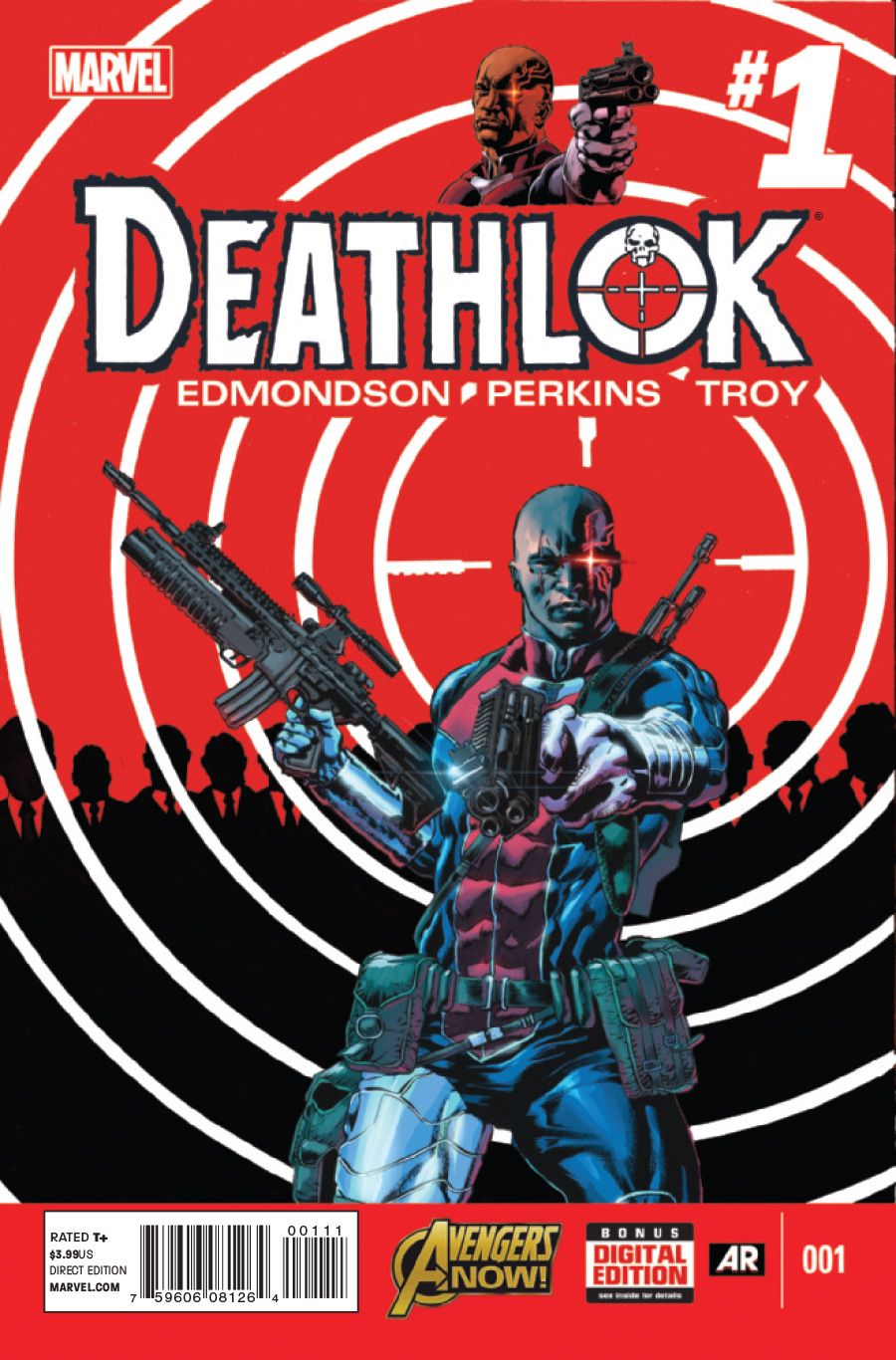Thanks to "Marvel's Agents of S.H.I.E.L.D.," the character of Deathlok has never been this popular, so Marvel capitalizes on the craze by launching a new "Deathlok" #1 by Nathan Edmondson and Mike Perkins. The new Deathlok, who this time is covert operative Henry Hayes, is more evocative of the new television incarnation than the classic cyborg version, but there are enough allusions to the original that keep it true enough to Doug Moench and Rich Buckler's initial concept and still attract fans of the TV series, all while delivering a fresh take on the character that fits comfortably within the framework of the Marvel Universe.
Edmondson plays down the cyborg aspect of the character, and at this point it's not clear that Hayes could even technically be considered a cyborg. Hayes' leg seems pretty technologically advanced for a mere prosthetic, and the trademark cybernetic eye is concealable. Perkins takes the lead in creatively ensuring that the old Deathlok hasn't been forgotten; the character most certainly looks like a cyborg while in action, even if it's by way of some detachable high-tech military gear.
Perkins gives the aforementioned cyber-eye a modern-day upgrade, the character's military helmet is evocative of the original character's metallic skull, and the overall costume design references many of the cosmetic aspects of Buckler's old design. Colorist Andy Troy even plays along, as the front of Hayes' uniform is the same deep red as Luther Manning's.
Perkins employs an almost exclusive use of softer, almost blurrier, lines and edges in lieu of sharply delineated shapes that give the entire issue a sense of gritty realism. It works especially well for the more violent sequences, where Perkins doesn't shy away from any blood or broken teeth, but it keeps these scenes from looking over-sensationalized; violence comes with Hayes' occupation but Perkins keeps it from being the center of the story, and ultimately a distraction from it.
A beautifully laid out splash page shows Deathlok taking his leave from a chaotic scene in dramatic fashion after his mission was successfully accomplished, one that's nicely detailed by Perkins and subtly colored by Troy, and also one that would have made an eye-catching cover. The actual cover, also by Perkins and Troy, is a more iconic-style image but no less appealing, aided by usage of the classic style logo.
Oddly enough, although for reasons yet to be explained, Hayes is never referred to as "Deathlok." However, this is the least important of the unanswered questions that Edmondson plants in this first issue, which are more than enough to make readers want to stick around for the answers. Edmondson brilliantly borrows ideas from Moench's original run, such as the central character's ongoing dialogue with a voice in his head, but completely alters the notion so that the basis of the inspiration remains while its execution seems remarkably fresh. This is coupled with a completely new idea for the character that mixes perfectly with the borrowed ones, making the whole Deathlok concept the most original it's been since its creation.
Edmondson and Perkins demonstrate a keen understanding of the character's essence, and know exactly what to keep and what to tweak. "Deathlok" #1 is the best take on the property since the original incarnation -- a well-constructed reintroduction of a historically underused property that stands to attract the character's existing fans as well as new ones.

